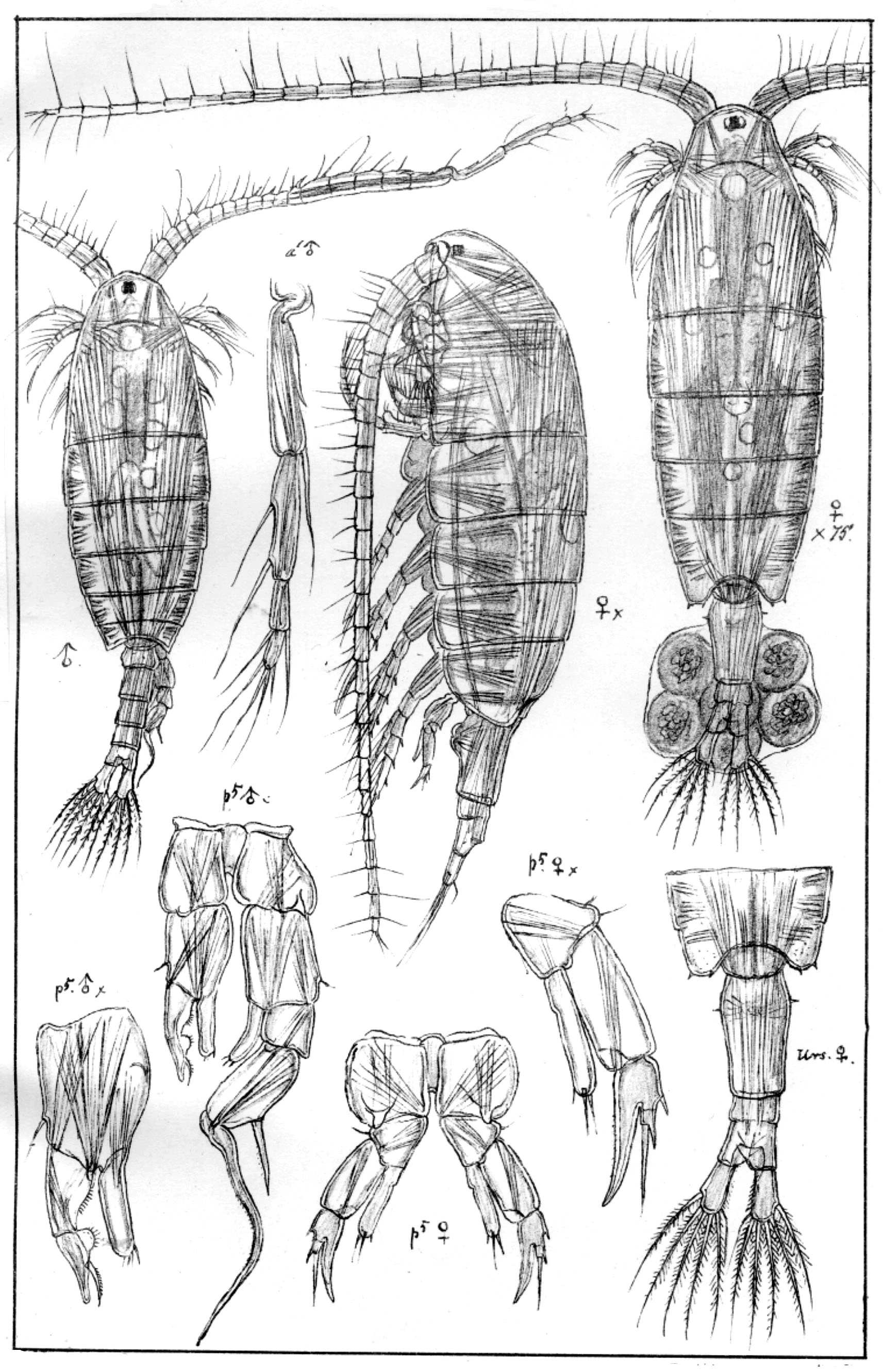Eudiaptomus graciloides
Eudiaptomus graciloides is the most common calanoid copepod in North-Norway. It is distinguished from E. gracilis by a less prominent lateral expansion of the last thorax segment and shorter antennas.
Key characteristics
Eudiaptomus graciloides (female)
The body of Eudiaptomus graciloides is very slender and resemble E. gracilis. The best way to distinguish these two species is the lateral expansion of the last thorax segment which is much more prominent in the latter. In E. graciloides this expansion is small and scarcely at all extant. The furca is short, about twice as long as wide, while the anterior antennas are long and slender extending far beyond the furca, in some cases as much as the 2 or 3 outer joints. E. graciloides is generally very pellucid and almost colourless, but in some cases with a dark bluish hue.
Female: Length 1.0–2.5 mm
Male: Length 0.9–1.1 mm
Ecology and distribution
Except for a handful of records from water bodies in south Norway, the majority east of Oslo, E. graciloides is found in the three northernmost counties. As a consequence of its northern distribution it is rare at high elevations (>500 m a.s.l.). It occurs with its highest frequency in large lakes (>10 ha) though it is also common in relatively small ponds. E. graciloides is only found twice at pH<5.5. It is common when conductivity is above 2 mS/m.
| Vitenskapelig navn | < 4,5 | 4,5 - 4,9 | 5,0 - 5,4 | 5,5 - 5,9 | 6,0 - 6,4 | 6,5 - 7,0 | 7,0 - 7,4 | > 7,5 |
|---|---|---|---|---|---|---|---|---|
| 0 | 0 | 0 | 2,6 | 5,2 | 8,5 | 12,3 | 16,9 |
| Vitenskapelig navn | < 1,0 | 1,0 - 1,4 | 1,5 - 1,9 | 2,0 - 2,9 | 3,0 - 3,9 | 4,0 - 4,9 | 5,0 - 6,9 | 7,0 - 9,9 | > 10,0 |
|---|---|---|---|---|---|---|---|---|---|
| 0 | 1,7 | 1,4 | 7,1 | 10,6 | 10,2 | 19,8 | 16,5 | 6,8 |
| Vitenskapelig navn | < 0,01 | 0,01 - 0,09 | 0,1 - 0,9 | 1,0 - 9,9 | 10,0 - 99 | 100 - 999 | > 1000 |
|---|---|---|---|---|---|---|---|
| 0 | 4,1 | 1,5 | 3,9 | 7,4 | 7,7 | 10,7 |
| Vitenskapelig navn | < 100 | 100-299 | 300-499 | 500-699 | 700-999 | >1000 |
|---|---|---|---|---|---|---|
| 12,5 | 7,7 | 6 | 2,6 | 0 | 0 |
Look alikes
Eudiaptomus gracilis

